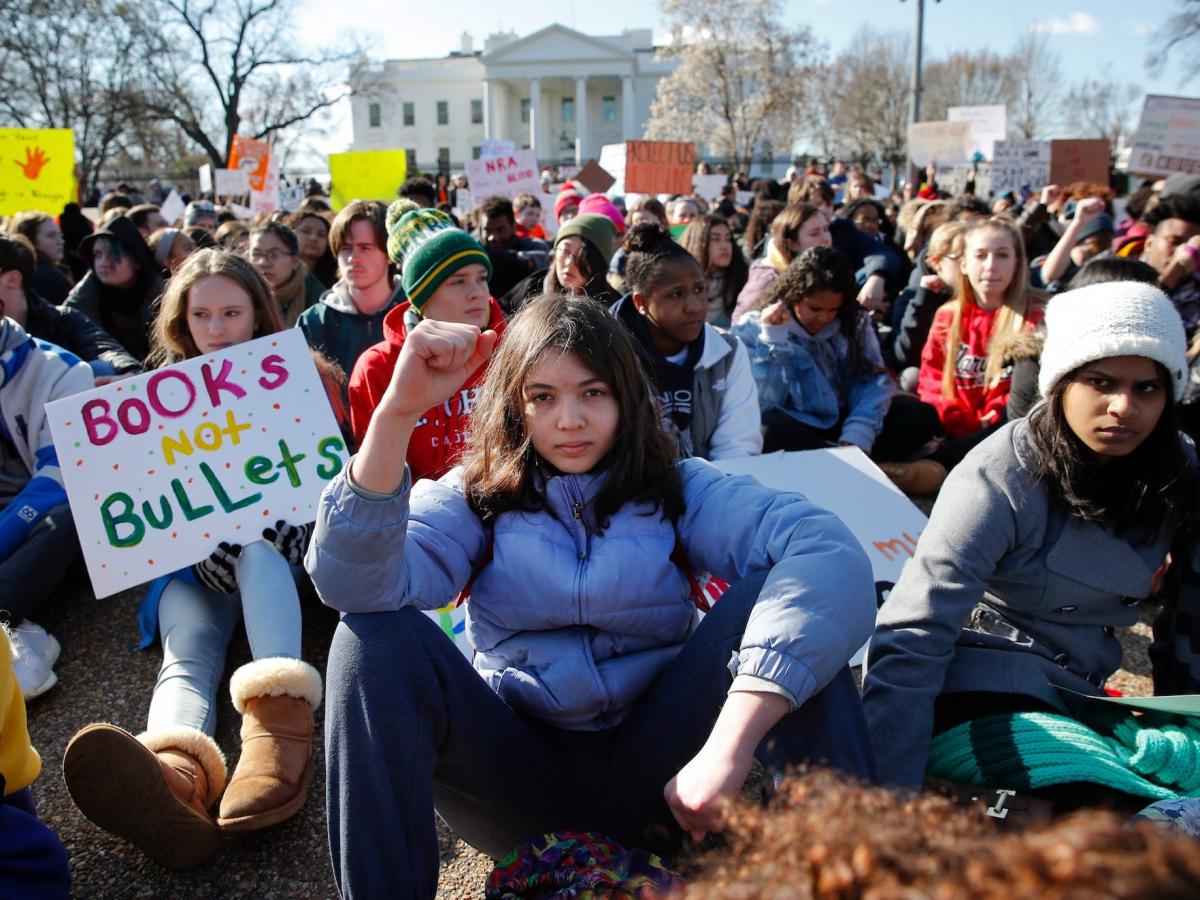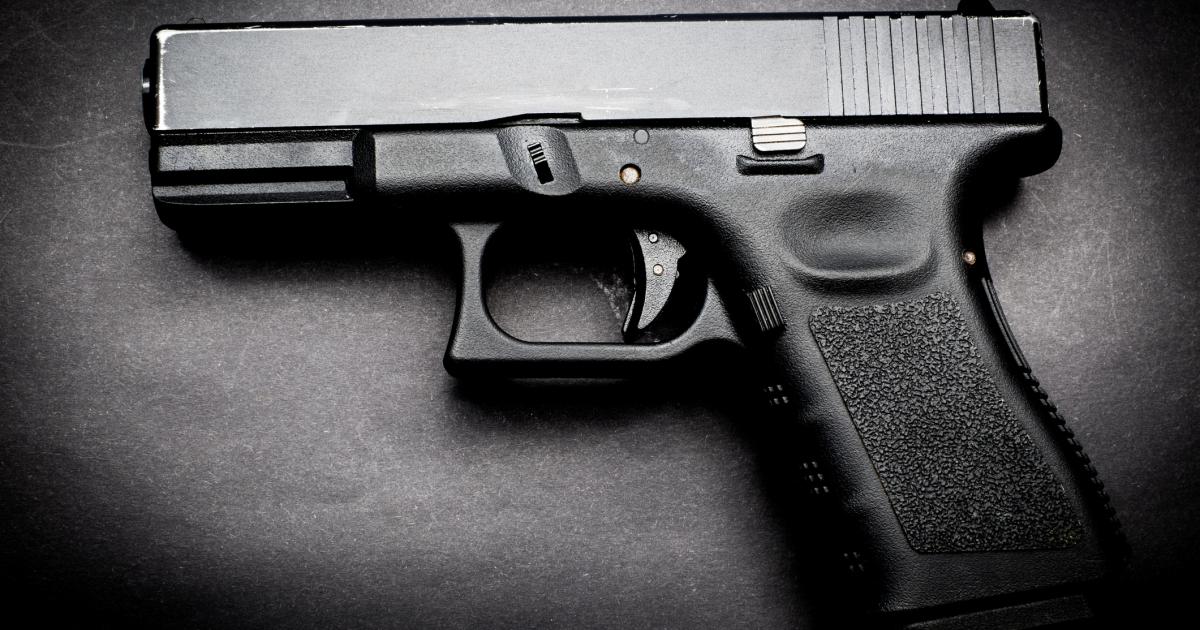Ray From Cleveland
Diamond Member
- Aug 16, 2015
- 97,215
- 37,438
- 2,290
Lol how about you explain HOW concealed carry helps to reduce crime rates? What sense does that make? Perhaps if you said open carry I would believe you.What the article says is that looser concealed carry laws contribute to more gun deaths in general - not just mass shootings. As a separate point, it says the good guy with a gun idea doesn’t affect mass shootings.Okay again , the violent crime rates across the board have been going down. My study specifically makes the connection between gun ownership and GUN DEATHS SPECIFICALLY. Your so called studies are simply looking at crime trends that have already been going down anyway.A lot of things can be bi-directional. Studies suggest this for this reason. You have no good reason to actually believe that shit. Your confidence is based on nothing. Either way, nothing good comes from more higher gun ownership. Clearly people owning more guns doesn’t stop the crime rate anyway. The result is more bad people with guns.No, it isn't as the article clearly states and I have shown. Increased gun ownership is far more likely to be a result of violent crime than the cause. I doubt you even bothered to read what you linked to and have no idea what it says. That's why I quoted it. But apparently you didn't bother to read that either.It’s linked in the article idiot.SHOW ME THE FUCKING RESEARCH OR FUCK OFF, YAHOO "NEWS"!!!
New research puts the 'good guy with a gun' idea to rest: Loose concealed-carry laws are linked to more firearm homicides
States with looser concealed-carry laws have higher rates of gun homicide. And higher gun-ownership rates are associated with more mass shootings.www.yahoo.com
A new study found that states with looser concealed-carry gun laws have higher rates of gun homicide.
The results also showed that higher levels of gun ownership are associated with more mass shootings.
The study suggests the US could reduce gun violence by lowering levels of gun ownership and passing stricter concealed-carry laws.
Visit Business Insider's homepage for more stories.
The "good guy with a gun" theory goes like this: If more well-intentioned people carry guns, there's a higher chance of stopping a violent shooter.
Unfortunately, that's not how it works in real life, according to new research published in the journal Justice Quarterly. The study found that laws allowing more people to carry guns in public are associated with a rise in gun violence. The results also showed that the higher a state's gun-ownership rate, the more likely a mass shooting is.
Here...actual research proving you wrong...
Right-to-Carry Concealed Weapon Laws and Homicide in Large U.S. Counties: The Effect on Weapon Types, Victim Characteristics, and Victim-Offender Relationships By DAVID E. OLSON AND MICHAEL D. MALTZ, Journal of Law and Economics, October 2001
Our results indicated that the direction of effect of the shall-issue law on total SHR homicide rates was similar to that obtained by Lott and Mustard, although the magnitude of the effect was somewhat smaller and was statistically significant at the 7 percent level. In our analysis, which included only counties with a 1977 population of 100,000 or more, laws allowing for concealed weapons were associated with a 6.52 percent reduction in total homicides (Table 2). By comparison, Lott and Mustard found the concealed weapon dummy variable to be associated with a 7.65 percent reduction in total homicides across all counties and a 9 percent reduction in homicides when only large counties (populations of 100,000 or more) were included.43
====
====http://johnrlott.tripod.com/Plassmann_Whitley.pdf
COMMENTS
Confirming ìMore Guns, Less Crimeî Florenz Plassmann* & John Whitley**
CONCLUSION Analyzing county-level data for the entire United States from 1977 to 2000, we find annual reductions in murder rates between 1.5% and 2.3% for each additional year that a right-to-carry law is in effect.
For the first five years that such a law is in effect, the total benefit from reduced crimes usually ranges between about $2 and $3 billion per year.
The results are very similar to earlier estimates using county-level data from 1977 to 1996. We appreciate the continuing effort that Ayres and Donohue have made in discussing the impact of right-to-carry laws on crime rates. Yet we believe that both the new evidence provided by them as well as our new results show consistently that right-to-carry laws reduce crime and save lives. Unfortunately, a few simple mistakes lead Ayres and Donohue to incorrectly claim that crime rates significantly increase after right-to-carry laws are initially adopted and to misinterpret the significance of their own estimates that examined the year-to-year impact of the law.
http://crimeresearch.org/wp-content...An-Exercise-in-Replication.proof_.revised.pdf
~ The Impact of Right-to-Carry Laws on Crime: An Exercise in Replication1
Carlisle E. Moody College of William and Mary - Department of Economics, Virginia 23187, U.S.A. E-mail: [email protected] Thomas B. Marvell Justec Research, Virginia 23185, U.S.A. Paul R. Zimmerman U.S. Federal Trade Commission - Bureau of Economics, Washington, D.C., U.S.A. Fasil Alemante College of William and Mary, Virginia 23187, U.S.A.
Abstract: In an article published in 2011, Aneja, Donohue and Zhang found that shall-issue or right-to-carry (RTC) concealed weapons laws have no effect on any crime except for a positive effect on assault.
This paper reports a replication of their basic findings and some corresponding robustness checks, which reveal a serious omitted variable problem.
Once corrected for omitted variables, the most robust result, confirmed using both county and state data, is that RTC laws significantly reduce murder.
====
===An examination of the effects of concealed weapons laws and assault weapons bans on state-level murder rates
Mark Gius
Abstract
The purpose of the present study is to determine the effects of state-level assault weapons bans and concealed weapons laws on state-level murder rates.
Using data for the period 1980 to 2009 and controlling for state and year fixed effects, the results of the present study suggest that states with restrictions on the carrying of concealed weapons had higher gun-related murder rates than other states.
It was also found that assault weapons bans did not significantly affect murder rates at the state level. These results suggest that restrictive concealed weapons laws may cause an increase in gun-related murders at the state level. The results of this study are consistent with some prior research in this area, most notably Lott and Mustard (1997).
“The Debate on Shall-Issue Laws” by Carlisle e. Moody and Thomas B. Marvell, published in Econ Journal Watch, volume 5, number 3, September 2008 It is also available here..
Summary and Conclusion
Many articles have been published finding that shall-issue laws reduce crime. Only one article, by Ayres and Donohue who employ a model that combines a dummy variable with a post-law trend, claims to find that shall-issue laws increase crime.
However, the only way that they can produce the result that shall-issue laws increase crime is to confine the span of analysis to five years
. We show, using their own estimates, that if they had extended their analysis by one more year, they would have concluded that these laws reduce crime.
Since most states with shallissue laws have had these laws on the books for more than five years, and the law will presumably remain on the books for some time, the only relevant analysis extends beyond five years. We extend their analysis by adding three more years of data, control for the effects of crack cocaine, control for dynamic effects, and correct the standard errors for clustering.
We find that there is an initial increase in crime due to passage of the shall-issue law that is dwarfed over time by the decrease in crime associated with the post-law trend.
These results are very similar to those of Ayres and Donohue, properly interpreted.
The modified Ayres and Donohue model finds that shall-issue laws significantly reduce murder and burglary across all the adopting states. These laws appear to significantly increase assault, and have no net effect on rape, robbery, larceny, or auto theft. However, in the long run only the trend coefficients matter. We estimate a net benefit of $450 million per year as a result of the passage of these laws. We also estimate that, up through 2000, there was a cumulative overall net benefit of these laws of $28 billion since their passage. We think that there is credible statistical evidence that these laws lower the costs of crime. But at the very least, the present study should neutralize any “more guns, more crime” thinking based on Ayres and Donohue’s work in the Stanford Law Review
Taking apart ayre and donahue one....
“The Debate on Shall-Issue Laws” by Carlisle e. Moody and Thomas B. Marvell, published in Econ Journal Watch, volume 5, number 3, September 2008 It is also available here..
Abstract
“Shall-issue” laws require authorities to issue concealed-weapons permits to anyone who applies, unless the applicant has a criminal record or a history of mental illness. A large number of studies indicate that shall-issue laws reduce crime. Only one study, an influential paper in the Stanford Law Review (2003) by Ian Ayres and John J. Donohue iii, implies that these laws lead to an increase in crime. We apply an improved version of the Ayres and Donohue method to a more extensive data set. Our analysis, as well as Ayres and Donohue’s when projected beyond a five-year span, indicates that shall-issue laws decrease crime and the costs of crime. Purists in statistical analysis object with some cause to some of methods employed both by Ayres and Donohue and by us. But our paper upgrades Ayres and Donohue, so, until the next study comes along, our paper should neutralize Ayres and Donohue’s “more guns, more crime” conclusion.
Summary and Conclusion Many articles have been published finding that shall-issue laws reduce crime. Only one article, by Ayres and Donohue who employ a model that combines a dummy variable with a post-law trend, claims to find that shall-issue laws increase crime. However, the only way that they can produce the result that shall-issue laws increase crime is to confine the span of analysis to five years. We show, using their own estimates, that if they had extended their analysis by one more year, they would have concluded that these laws reduce crime. Since most states with shallissue laws have had these laws on the books for more than five years, and the law will presumably remain on the books for some time, the only relevant analysis extends beyond five years. We extend their analysis by adding three more years of data, control for the effects of crack cocaine, control for dynamic effects, and correct the standard errors for clustering. We find that there is an initial increase in crime due to passage of the shall-issue law that is dwarfed over time by the decrease in crime associated with the post-law trend. These results are very similar to those of Ayres and Donohue, properly interpreted. The modified Ayres and Donohue model finds that shall-issue laws significantly reduce murder and burglary across all the adopting states. These laws appear to significantly increase assault, and have no net effect on rape, robbery, larceny, or auto theft. However, in the long run only the trend coefficients matter.
We estimate a net benefit of $450 million per year as a result of the passage of these laws.
We also estimate that, up through 2000, there was a cumulative overall net benefit of these laws of $28 billion since their passage.
We think that there is credible statistical evidence that these laws lower the costs of crime. But at the very least, the present study should neutralize any “more guns, more crime” thinking based on Ayres and Donohue’s work in the Stanford Law Review. We acknowledge that, especially in light of the methodological issues of the literature in general, the magnitudes derived from our analysis of crime statistics and the supposed costs of crime might be dwarfed by other considerations in judging the policy issue. Some might contend that allowing individuals to carry a concealed weapon is a moral or cultural bad. Others might contend that greater liberty is a moral or cultural good. All we are confident in saying is that the evidence, such as it is, seems to support the hypothesis that the shall-issue law is generally beneficial with respect to its overall long run effect on crime.
No...it doesn't.....it tries to link concealed carry to mass public shootings and I showed you how even the simplest question debunks the entire study on that point........
The study you found claims concealed carry gun permit numbers increase mass public shootings....I showed you that this is stupid and dumb as a claim...
You can't explain the link either...
Mass public shooters don't need a concealed carry permit to carry the gun to the place where they plan on committing mass murder.......
Criminals who can't legally buy, own or carry guns, can't get a legal carry permit to carry their already illegal gun.......and they are the ones committing almost all of the murder in this country in democrat party controlled cities...
Your study is crap.......
It can't prove that since making a connection between law abiding permit holders makes no sense...since the majority of all crime and gun murder is committed by people who can't legally have a gun permit for their already illegal guns.........
And I just posted other real studies showing that concealed carry, in fact, helps to reduce the crime rate......
We used to have ATM robberies and car jackings all the time where I live. A few years after CCW's were permitted, those slowed down quite a bit. They still happen, but not nearly as much.
A CCW is not there to reduce crime rates, it's there so an individual can protect themselves in the event they are a target of crime.

